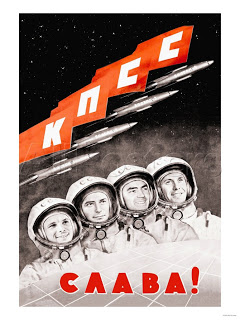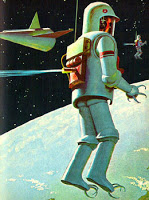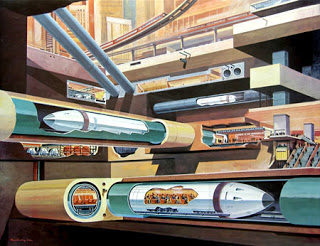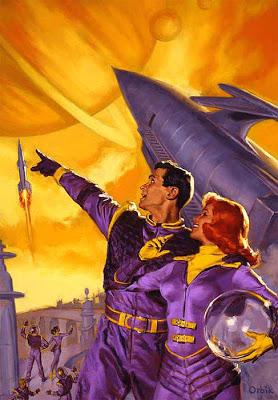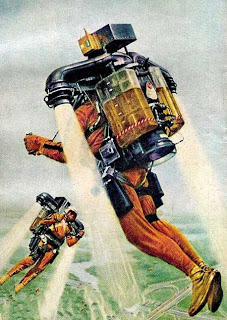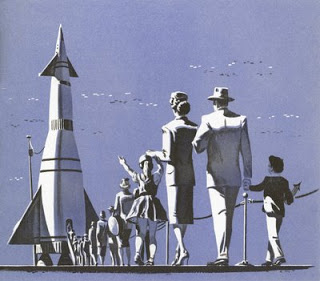Oddball Films welcomes Dan Streible, associate director of the Moving Image Archiving and Preservation program and founder of the long-running Orphan Film Symposium, to bring you Space Transformations, an evening of rare and newly-preserved films that will jettison you into the far reaches of the universe. Running the gamut of space relations, from experimental filmmaker Deborah Stratman's These Blazeing Stars (2011) to Czech animation in Kosmodrome 1999 (1969), to two Cold-War era Soviet Space Race films, including the 1947 Meteorites, and Teenage Cosmonauts (1979) where we join a gaggle of Soviet teens as they vie for a spot in the space program. Also included, the artistically rendered Project Apollo(1968) from sci-fi pulp artist Ed Emshwiller and the United States Information Agency. And, if you ever needed to know how to shower in space, we bring you Astrovac: Zero-Gravity Personal Body Wash Unit (1970). With plenty of other intergalactic surprises and a space soiree and reception to follow, you'd better hop in your hovercraft and get ready to launch into orbit!
Date: Friday August 3rd, 2012 at 8:00 PM
Venue:Oddball Films, 275 Capp Street San Francisco
Admission: $10.00 Limited Seating RSVP to programming@oddballfilm.com or (415) 558-8117
Featuring:
These Blazeing Stars (B&W, 2011)
Since comets have been recorded, they've augured catastrophe, messiahs, upheaval and end times. This short 16mm film about these meteoric ice-cored fireballs and their historic ties to divination combines imagery of 15th-through 18th-century European broadsides with NASA Jet Propulsion Laboratory footage and sound. - Deborah Stratman, director's statement
The Flatt and Scruggs Grand Ole Opry Show (B&W, 1961)
Guitar-banjo duo Lester Flatt and Earl Scruggs were plucky regulars at the Grand Ole Opry, until they got their very own spin-off show. Two of their Foggy Mountain Boys, Jake Tullock and Josh Graves take the space race to bluegrass-loving living rooms in these hilarious excerpts of the show singing "They're Gonna Put a Monkey on the Moon" and "The Sputnik Dog" (AKA "When That Shaggy Dog Gets Back from Outer Space").
Teenage Cosmonauts (Color, 1979)
Produced by the Ukranian Newsreel Documentary Film Institute, Teenage Cosmonauts documents a group of young men and women vying for a spot in the Young Cosmonaut School. These young recruits represent the ideal Soviet citizens, smart, patriotic and physically fit. The film seeks to glorify the Soviet space presence as well as constructs an elaborate imaginary space city, to herald the future as it sings the praise of the past.
Kosmodrome 1999 (Color, 1969)
The year is 1999. Interstellar travel is so commonplace; hordes of commuters shuttle about on rockets as casually as they commute from SF to LA today. Our hero misses his flight, however and his zany adventures with the Rube Goldberg-like rocket he tries to enlist results in bizarre and weirdly animated adventures. Brilliant animation and zany, electronic sounds! Produced by the famed Kratky Film Company in Prague and directed by Frantisek Vystreil.
Project Apollo (Color, 1968)
Ed Emshwiller (1925-1990) was an accomplished visual artist, working in media ranging from abstract painting to 3-D computer animation. In the 1950s, “Emsh” first became known for his pulp-realist and fantastical cover art for science fiction magazines and novels. By the mid-1960s, he had made his mark in avant-garde film and video. However, his American followers were largely unable to see his masterful and unconventional documentary Project Apollo, made for the United States Information Agency in 1968. USIA productions were made to promote American interests to viewers in other countries; until 1990, federal law made it illegal (with some exceptions) to show such ideologically conceived material inside U.S. borders. Hence, one can find libraries in South Africa and Canada, for example, holding copies of Project Apollo, but none in the United States.
With its modernist minimalist score, cool technical precision, and formalist design, Project Apollo was distinctive from most USIA films. Its atmospheric and stylistic correspondence to parts of 2001: A Space Odyssey is apparent to the few viewers who have seen both. In this sequence his use of semi-abstractions and image modification (solarization, color replacement, etc.) brings to the big screen techniques which once seemed the province of the avant-garde or experimentalists.
Meteorites(1947)
1947, the year of the first Soviet long-range ballistic missile, saw a rise in the Soviet interest in space exploration. This short educational film made by Pavel Klunshantsev for Leningrad Popular Science Film Studio explores these “stones from the sky” with an elegance rare in Soviet popular science cinema from the Stalinist period.
About the Curator:
Dan Streible founded the biannual Orphan Film Symposium in 1999, bringing together scholars, artists, archivists, and collectors to celebrate and promote the cause of orphan films – films that exist outside of commercial mainstream interests. He has researched and published extensively on the history of movie exhibition, amateur filmmaking, non-theatrical filmmaking, and early cinema, most recently co-editing Learning with the Lights Off: A Reader in Educational Film. Streible is an associate professor in the Department of Cinema Studies at New York University.
For More Orphan Film Information:
